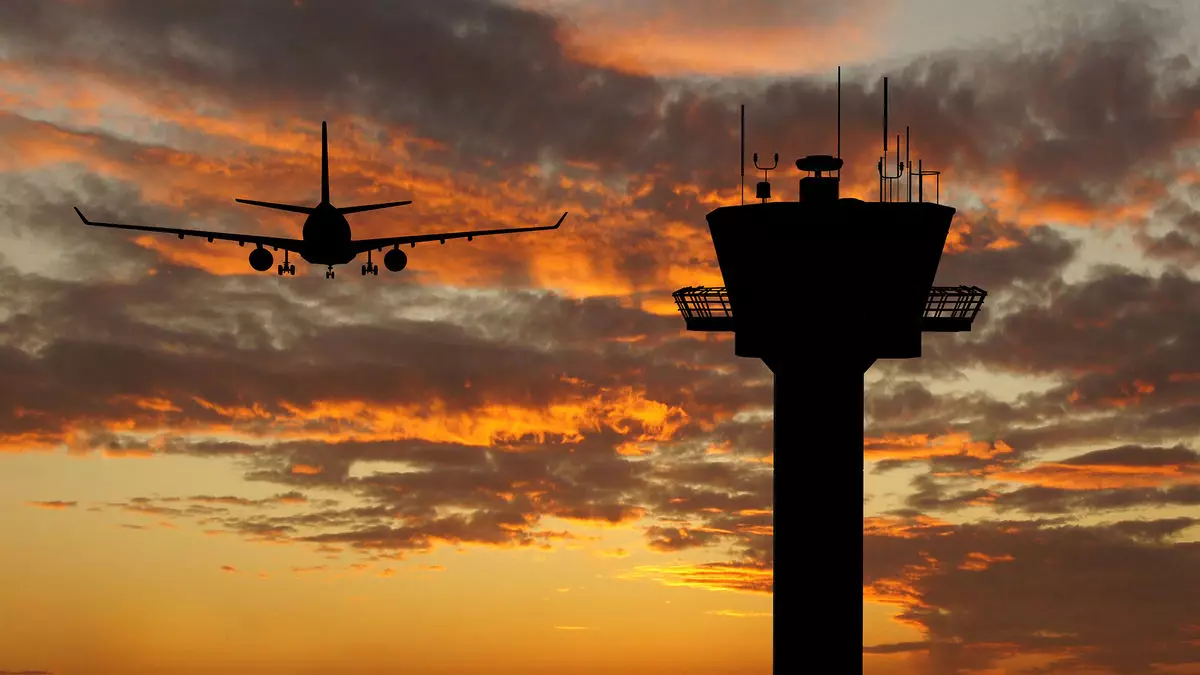In recent discussions, President Trump highlighted a pressing issue within the United States aviation sector—air traffic control systems that are woefully outdated. With an incident that resulted in the tragic loss of 67 lives still fresh in public memory, Trump’s urgency is palpable. The collision between an American Eagle jet and an Army helicopter near Washington, D.C., underscores the dangers of an antiquated system. As he addressed this concern at the National Prayer Breakfast, Trump asserted that the fatal accident could have been avoided with “the right equipment.” This statement raises critical questions about accountability, safety protocols, and the necessary steps to overhaul our aviation systems.
Modern air traffic management systems function as the backbone of aviation safety, controlling the flow of aircraft and ensuring the seamless operation of commercial aviation. Yet, the current infrastructure in the U.S. is often criticized for being pieced together and lacking the sophistication found in countries with advanced air control technologies. Trump’s commitment to establishing a “great computerized” system invites discussion not only about technological upgrades but also about whether more significant investment is required to prevent future disasters.
Although Trump’s remarks fueled optimism regarding potential advancements, they also highlight the complexities of the air traffic modernization project known as NextGen. Introduced by the Federal Aviation Administration (FAA) in 2007, this modernization initiative represents an investment of close to $20 billion. Yet, this substantial funding has faced setbacks in implementation, drawing criticism from various stakeholders. A recent report indicated that although some components are projected for completion this year, many of the anticipated benefits of NextGen will fall short of the initial promises.
The question arises: will Trump’s proposal be an enhancement to the NextGen system, or does it signal the beginning of an entirely new initiative? U.S. Travel spokesman Greg Staley has expressed uncertainty; nonetheless, he emphasizes the need for decisive leadership to facilitate these upgrades swiftly. Time is of the essence, as delays in implementing technology upgrades could compromise safety and hinder the industry’s capacity to meet surging demand.
Trump did not hesitate to compare the U.S. air traffic control system with those found in other countries, remarking on their capability and efficiency. For a nation characterized by an expansive network of air travel, the disparity is troubling. The fact that Trump himself acknowledges utilizing international systems for his private flights adds another layer to the ongoing discourse. By asserting that America should aspire to have “the best system,” Trump positions this modernization effort not merely as a logistical improvement but as a reflection of American values—a commitment to safety, advancement, and operational excellence.
The potential for technological integration is vast. As policymakers and industry leaders convene to discuss these opportunities, they must also consider how to attract and retain skilled personnel. Investment in technology is paramount, but so is investment in the human capital that operates these systems. A push for workforce development will be essential in ensuring that the new systems are utilized effectively.
Trump’s statements have garnered support from industry leaders like Geoff Freeman, CEO of the U.S. Travel Association, highlighting a shared commitment to improve air travel experiences. The collaboration between the private sector and governmental agencies could serve as an essential blueprint for effectively implementing these changes. Stakeholders agree: the path forward requires not only innovative technology but also focused leadership that prioritizes safety and efficiency.
The conversation initiated by Trump’s remarks represents a broader call to action for the aviation industry and related stakeholders. It remains crucial that dialogue persists, with a focus on developing comprehensive strategies that incorporate advanced technology, operational improvements, and robust safety measures. Only then can the U.S. hope to align itself with global standards, ensuring that air travel is not only efficient but fundamentally safe.
As discussions surrounding air traffic control evolve, the potential for transformation exists. The vision of a cutting-edge system is not merely aspirational; it is a necessity for an industry responsible for the safe transit of millions. The shared goal of revolutionizing this system reminds us that when it comes to safeguarding human lives, complacency is not an option.


Leave a Reply